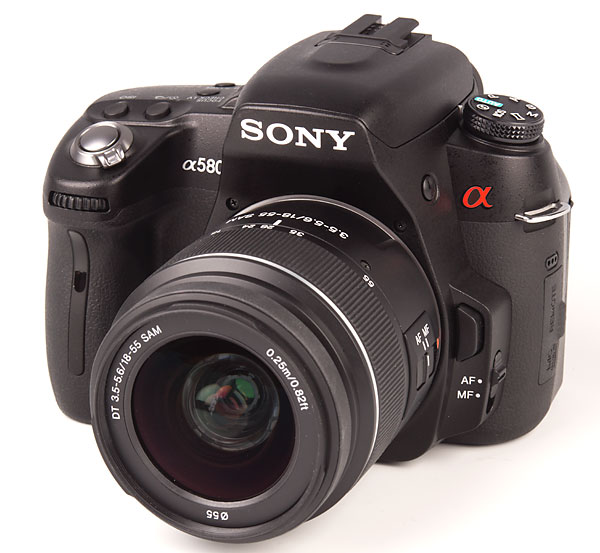Please see this page for details of NEX full-frame compatibility: http://www.photoclubalpha.com/2012/08/19/should-nex-go-full-frame/. Further information updated August 19th 2012: Paul Genge left Sony UK on Friday August 18th 2012, after many years with Minolta, Konica Minolta and Sony in turn. He is setting up his own website company.
———————————————————————————————
At photokina 2010, Paul Genge of Sony UK was able to show me his NEX-5 with the new firmware v3 installed, but not to provide any copy of the firmware or update my own NEX-5.
Once installed, the firmware provides new Custom Menu assignment options.
Button B (Soft Key B) which is the lowermost button, can be assigned a function from the following list:
- Shoot Mode
- Shoot Tips (the existing default)
- Precision Digital Zoom (teleconverter)
- ISO setting
- White Balance
- Metering Mode
- Flash Compensation
- DRO/HDR
- Creative Style
- MF Assist
Button or Soft Key C (the centre conroller button) has three Custom Memory registers. After reprogramming the button, you can then access three different new functions using the surrounding controller.
You can set the Memory registers to a selection of three of the following:
- AF Area
- ISO Setting
- White Balance
- Metering mode
- Flash Compensation
- DRO/HDR
- Creative Style
or nothing (you do no have to assign a function to all three Custom Memory registers).
Therefore, in addition to the existing direct control of exposure compensation from the main controller, the Centre and Bottom buttons can between be assigned four rapidly accessed different vital functions.
For Aperture priority video, the procedure could not be simpler; just set Aperture Priority mode, select the aperture, press the Viedo button and you get that aperture.
Autofocus is enabled with SSM and SAM lenses. When the new A700-series model appears, Paul confirmed that it will look quite different from the mock-up shown at PMA and again at photokina. All the clues I can get indicate that it does indeed use the same basic internal system as the A33/55, and will have an EVF. But Paul said this camera will include such high specification features that current A700 owners will be amazed.
Two more comments he made are worth relaying. Asked whether there would be no further development of the full-frame range, Paul said they intended to complete the A3/5/7 developments and would then turn their attention to new full frame, including an Alpha 900 replacement with features yet to be decided. He pointed to the new 500mm f/4 G SSM, shown in bare metal and with paint on, as evidence of their intentions. Also, it was possible to create a full frame NEX, using the same mount and the A-mount adaptor, but never the same lenses as the APS-C NEX. The mount had been designed to allow this and it might one day happen, in which case full-frame adapted Leica lenses (and so on) would be even more useful.
The new standard zoom lens (16-80mm replacement) could be SAM not SSM. Paul pointed to the ring on the front of the mockup (gold ring – a bit of a Tamron-type clue?) and suggested that this could mean the SAM motor.
The Sony stand showcased many examples of converters (especially the high quality products from Novoflex and Voigtlander) and showed many ‘alien’ lenses from new to old fitted to NEX bodies. In the meantime, Carl Zeiss filled their stand with Sony bodies ro demonstrate CZ lenses – their own stand staff were using NEX-5 (on guy had a 35mm Biogon fitted) and for demonstration, both A55 and A900 were fitted with the new 24mm f/2 CZ, NEX was fitted with 16-80mm, A900 with 135mm f/1.8 – and many more combinations.
Wherever I went, the NEX was in evidence, perhaps more amongst members of the trade and dealer staff than amongst the photographer visitors who (as at all trade shows) lumbered around with Canons and 70-200mm f/2.8 lenses.
– David Kilpatrick





